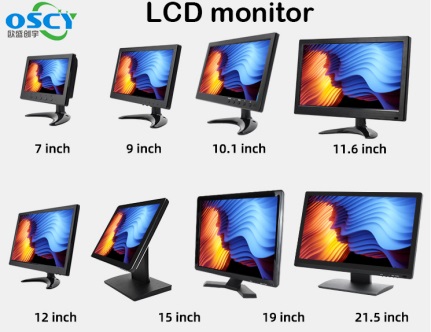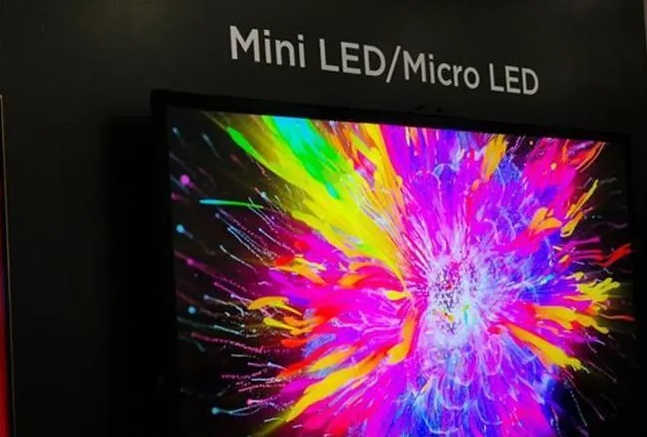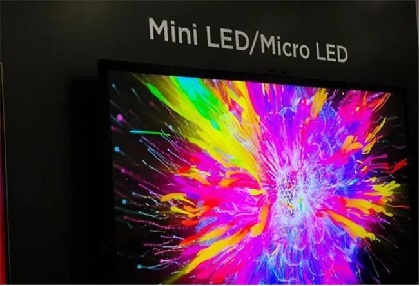With the rapid development of science and technology, the development and evolution of displays as core components for human interaction not only reflects the progress of technology, but also reflects the changes in social lifestyles. From early cathode ray tube displays to liquid crystal displays, and now to organic light-emitting diode displays, quantum dot displays, etc., displays have brought us unprecedented visual experience in constant innovation and breakthroughs, and also made displays ubiquitous.
1. Cathode ray tube display (CRT)
Cathode ray tube, referred to as CRT (Cathode Ray Tube), was the mainstream display technology in the 1980s and early 1990s. This display technology uses the electron beam emitted by an electron gun to hit the phosphor, excite the phosphor to emit light, and thus form an image. Representatives of CRT displays include IBM's color display and monochrome display. However, due to the large size, heavy weight, high power consumption, and the inability to achieve thinness, CRT displays have gradually been replaced by new display technologies.
2. Plasma Display Panel (PDP)
PDP, also known as PDP (Plasma Display Panel), entered the market in the late 1990s. It uses the principle of gas discharge to form images by arranging the three primary colors of red, green and blue in a specific way and applying voltage to make them discharge and emit light. PDP displays have the advantages of high brightness, high contrast and rich colors, so they are gradually widely used in the market. Early PDP TVs were expensive due to technical and cost issues and were mainly aimed at the high-end market. PDP's performance advantage is unquestionable, but the biggest problem it faces is that the price of the whole machine remains high and lacks competitive advantages, so it is difficult to popularize.
3. Liquid Crystal Display (LCD)
Liquid Crystal Display, also known as LCD (Liquid Crystal Display), was the mainstream display technology from the mid-1990s to the early 21st century. LCD uses the optical properties of liquid crystal molecules under the action of an electric field to display images. LCD has the advantages of small size, light weight, low power consumption, thinness, and can achieve high-resolution display. With the development of technology, LCD has also made significant improvements in color, brightness and contrast. However, LCDs have a relatively small viewing angle and slow response speed, which limits the development of LCDs in some high-end application fields.
4. Traditional LED Displays (LED)
The evolution of traditional LED (Light Emitting Diode) displays can be traced back to the 1960s, when LEDs were mainly used in simple display devices such as indicator lights and digital displays. With the advancement of technology, the emergence of multi-color LED displays in the 1980s and 1990s further promoted the development of LED displays. By combining red, green and blue LEDs, multi-color LED displays are formed, allowing displays to present more colors. During this period, LED displays began to be widely used in some medium and low-resolution display devices, such as televisions and computer monitors. Entering the 21st century, with the continuous development of science and technology, the quality and performance of LED displays have been significantly improved. High-end LED displays with high brightness, high contrast, and high resolution have gradually emerged and are widely used in billboards, large-screen TVs, high-end commercial displays and other fields.
5. Organic Light-Emitting Diode Display (OLED)
Organic Light-Emitting Diode, referred to as OLED (Organic Light-Emitting Diode), is a display technology that began to emerge in the early 21st century. OLED uses the optical properties of organic materials under the action of an electric field to realize image display. OLED has the characteristics of self-luminescence, so the colors are bright and the contrast is high. At the same time, OLED has a large viewing angle and a fast response speed. These advantages make OLED have broad application prospects in high-end mobile devices, TVs and other fields. However, OLED has a relatively short lifespan and high manufacturing costs on large-size displays. These problems limit the development of OLED in certain fields.
6. Quantum Dot Display (QD)
Quantum Dot Display, referred to as QD Display (Quantum Dot Display), is a new type of display technology that has developed rapidly in recent years. QD-Display uses quantum dot materials as backlight sources and has the advantages of high color saturation, high contrast and wide viewing angle. In addition, QD-Display has a fast response speed, high brightness and low power consumption. These advantages make QD-Display have broad application prospects in TVs, monitors and mobile devices. However, the manufacturing process of QD-Display on large size displays is not yet mature, and the cost is high. These problems limit the development of QD-Display in certain fields.
7. Mini LED Display (Mini LED)
Mini LED display is a new type of display using Mini LED backlight technology. It uses 100~200 micron LED crystals and can produce display screens with 0.5-1.2 mm pixel particles, and the display effect is much better than traditional LED screens. Mini LED display has the advantages of high image quality, wide color gamut, fixed-point drive, high response speed, and excellent stability. It has gradually become an important technical development direction in the field of backlight and direct display. Driven by consumption upgrades, Mini LED is mainly used in display screens, automotive displays, mobile phones, and wearable devices. Since 2018, the application side of Pad, car-mounted, e-sports, and TV (especially TV) has shown a strong interest in Mini LED as a substitute for OLED. With the continuous maturity of Mini/Micro LED technology, major panel manufacturers have taken Mini LED backlight as one of the new backlight evolution directions, resulting in a large-scale increase in the industrialization demand in the application field of Mini/Micro LED and a strong demand for high-end LED chips.
8. Micro LED Display (Micro LED)
Micro LED is a technology of LED miniaturization and matrixization. Simply put, it is to make the LED backlight source thin-film, miniaturized, and arrayed, so that the LED unit can be less than 100 microns. Like OLED, each image element can be individually addressed and driven to emit light (self-luminous). Micro LED is a new product and new technology for upgrading LED display technology after LED indoor and outdoor display screens and LED small spacing. It has the advantages of "thin filmization, miniaturization, and arrayization" and represents the future development trend of high-end LED.
The development and evolution of monitors is a process of continuous innovation and breakthrough. From the early CRT to the current OLED, QD, etc., every technological advancement has brought unprecedented visual experience. However, each monitor technology has its advantages and disadvantages and application scope, so it is necessary to choose the appropriate display technology according to the specific application scenario.
Related Tags: LCD Monitor , Touch Monitor